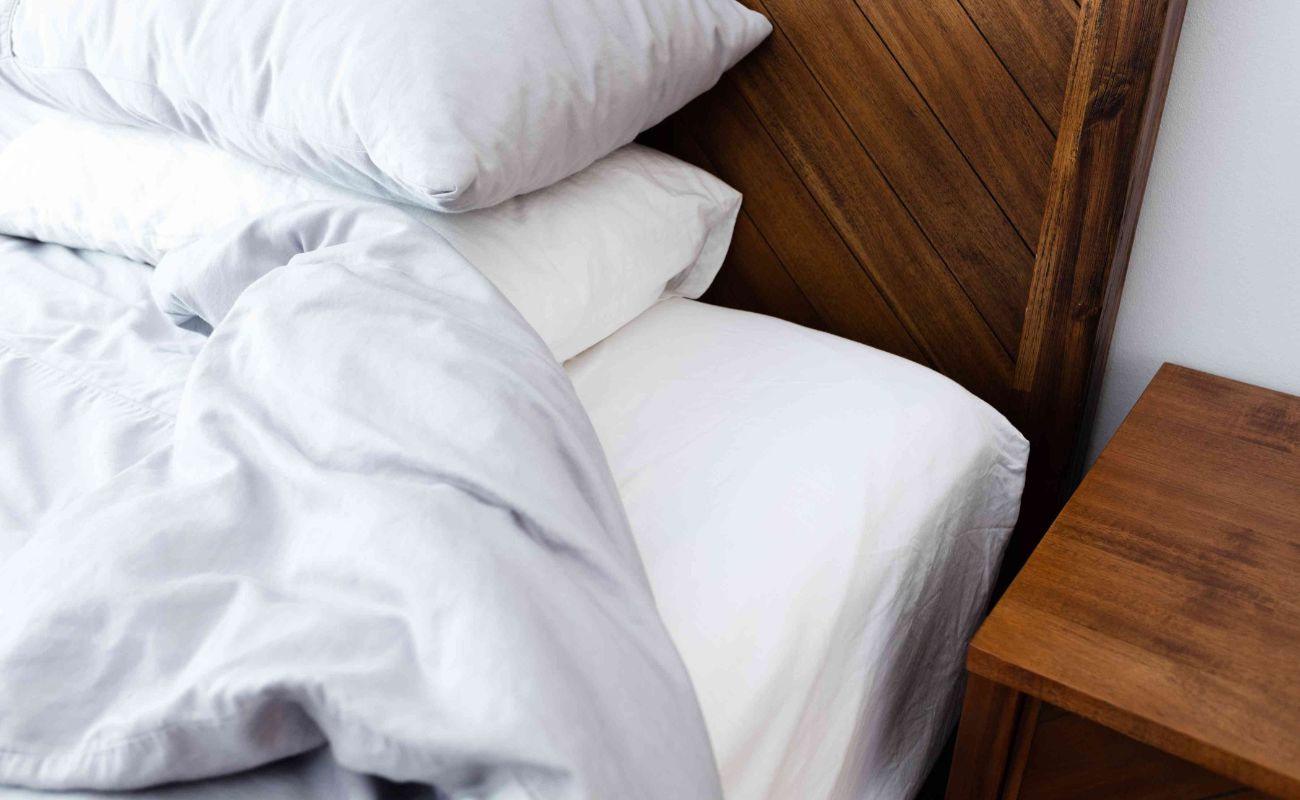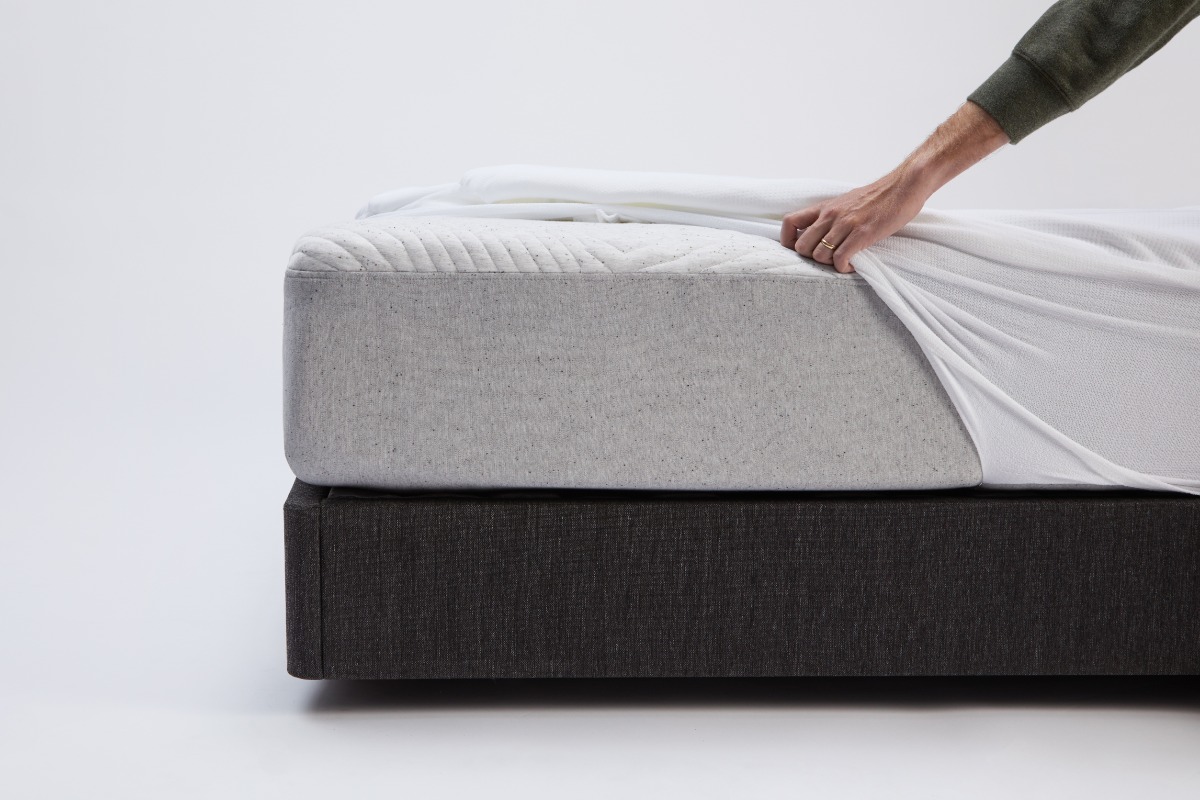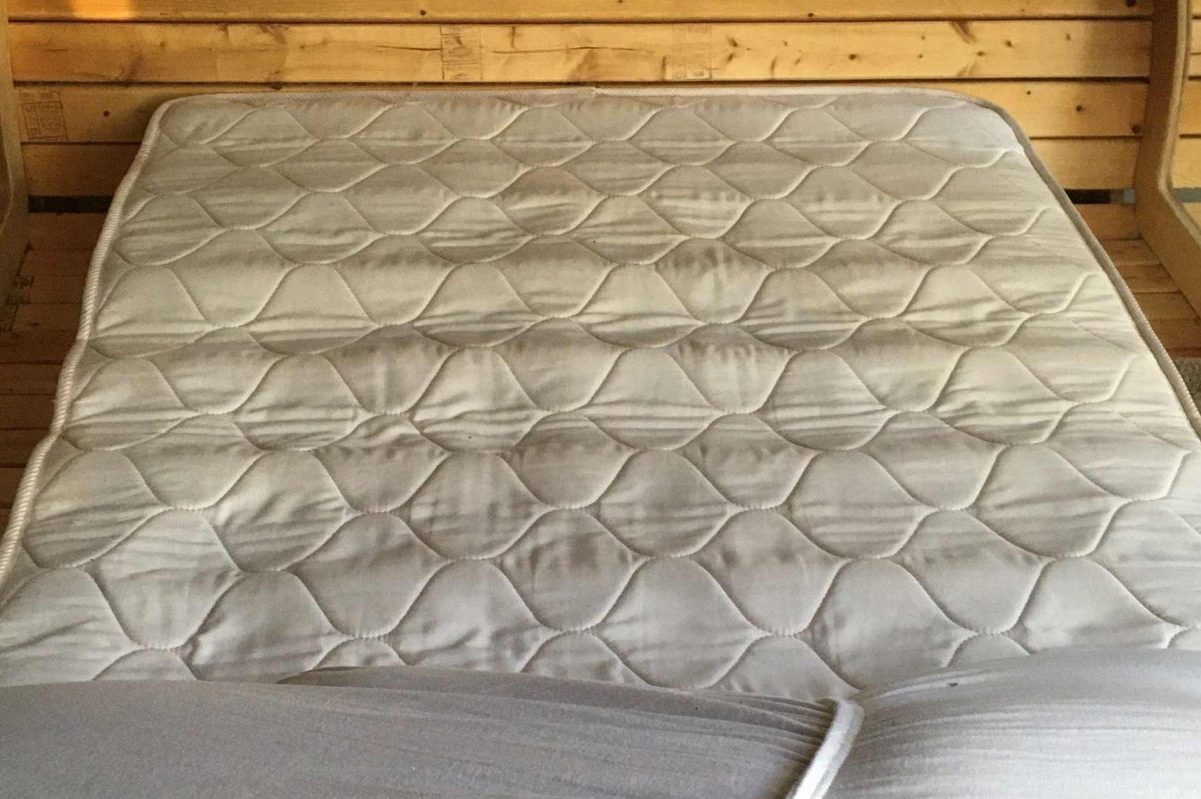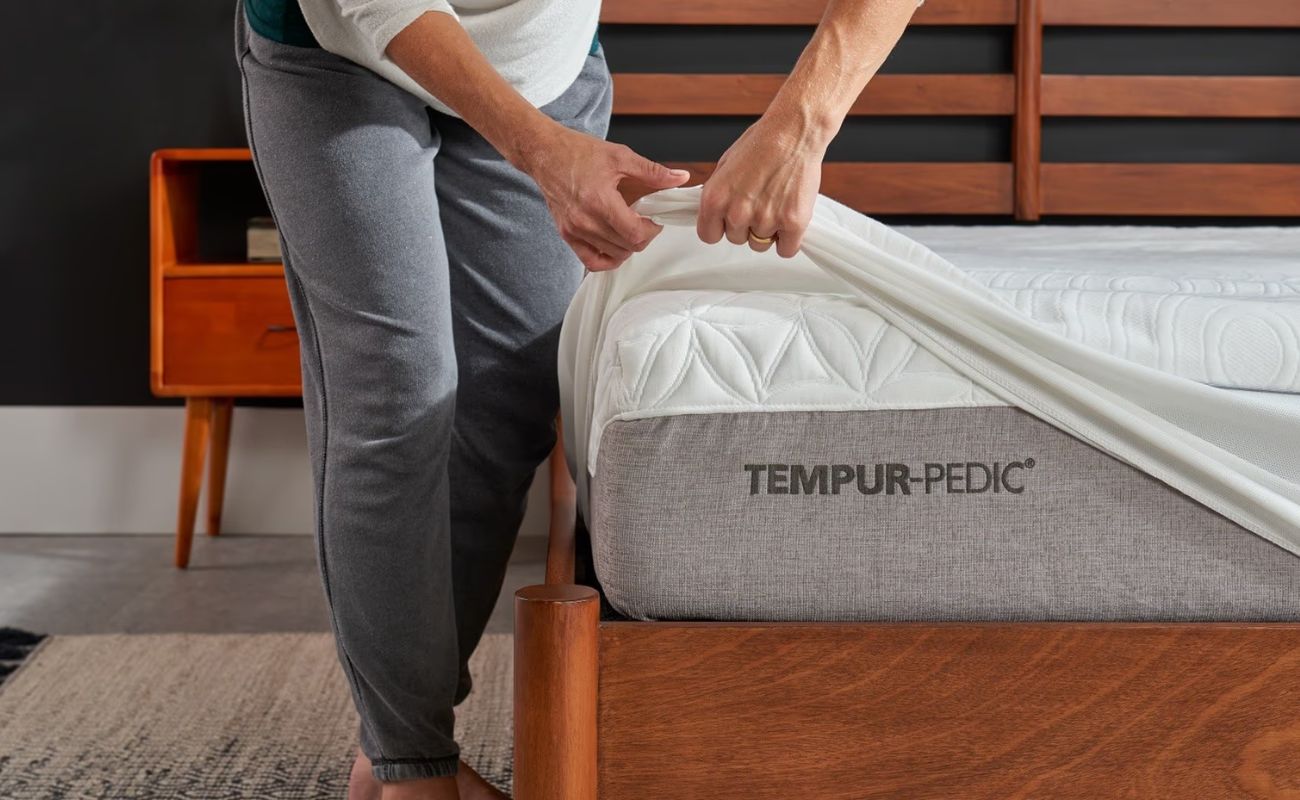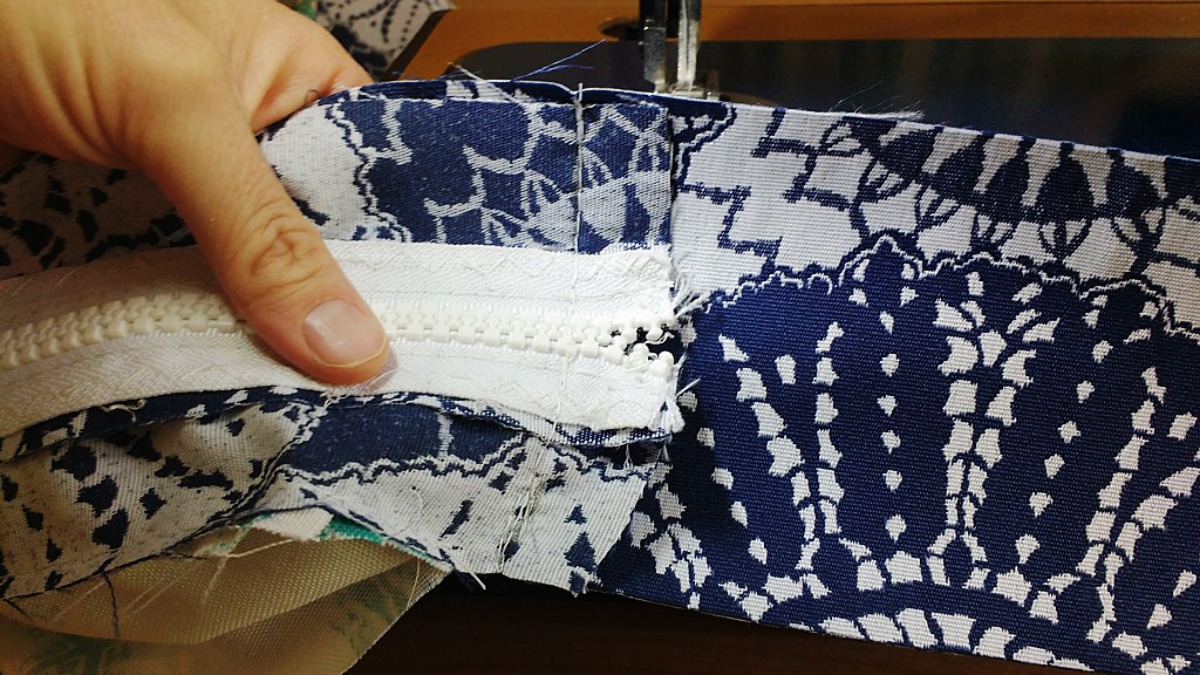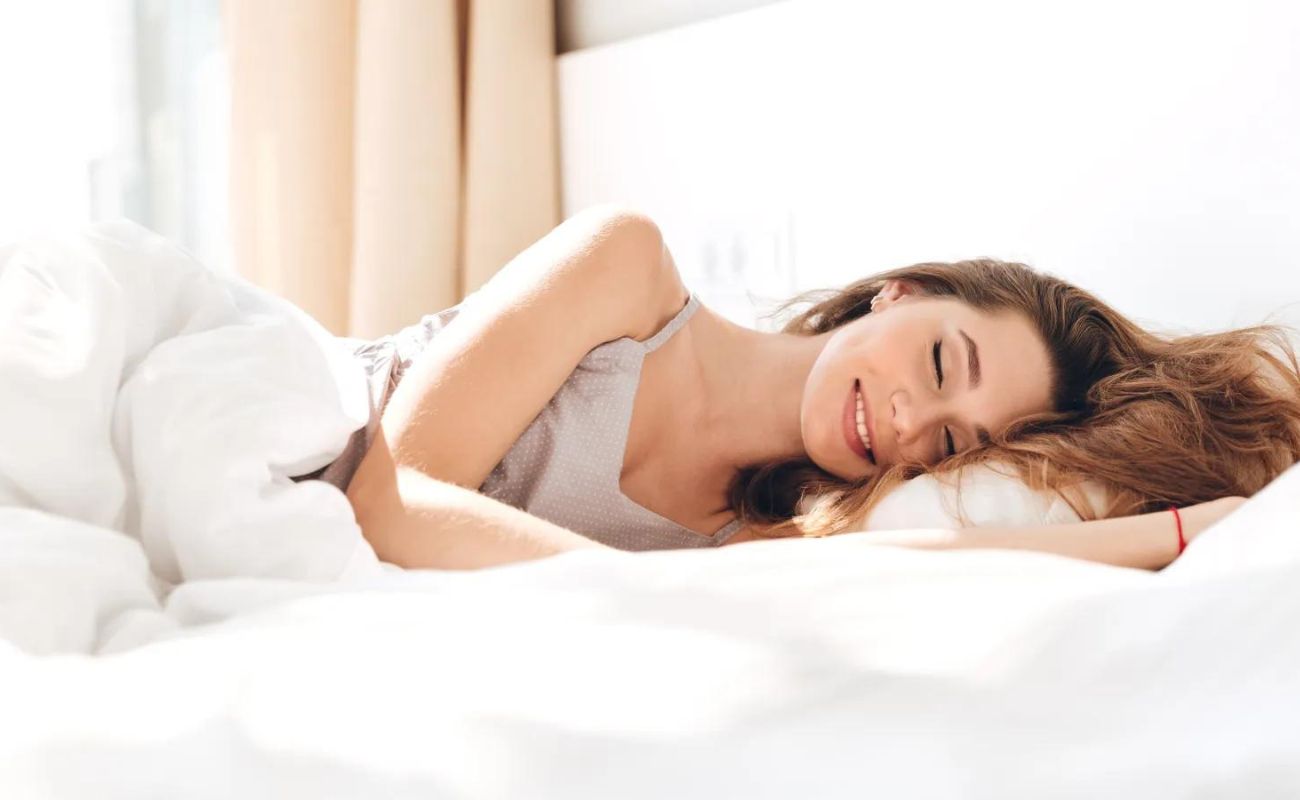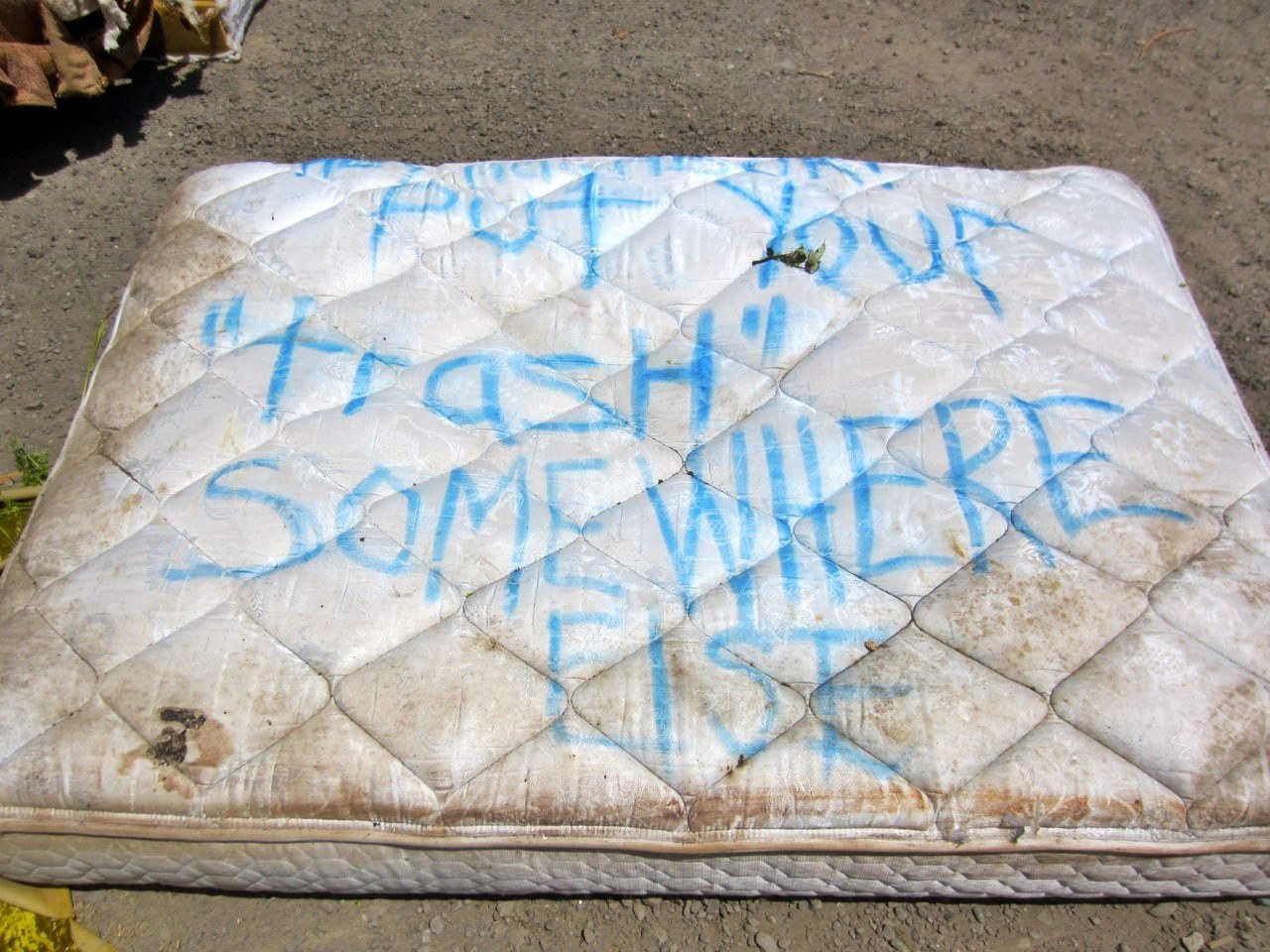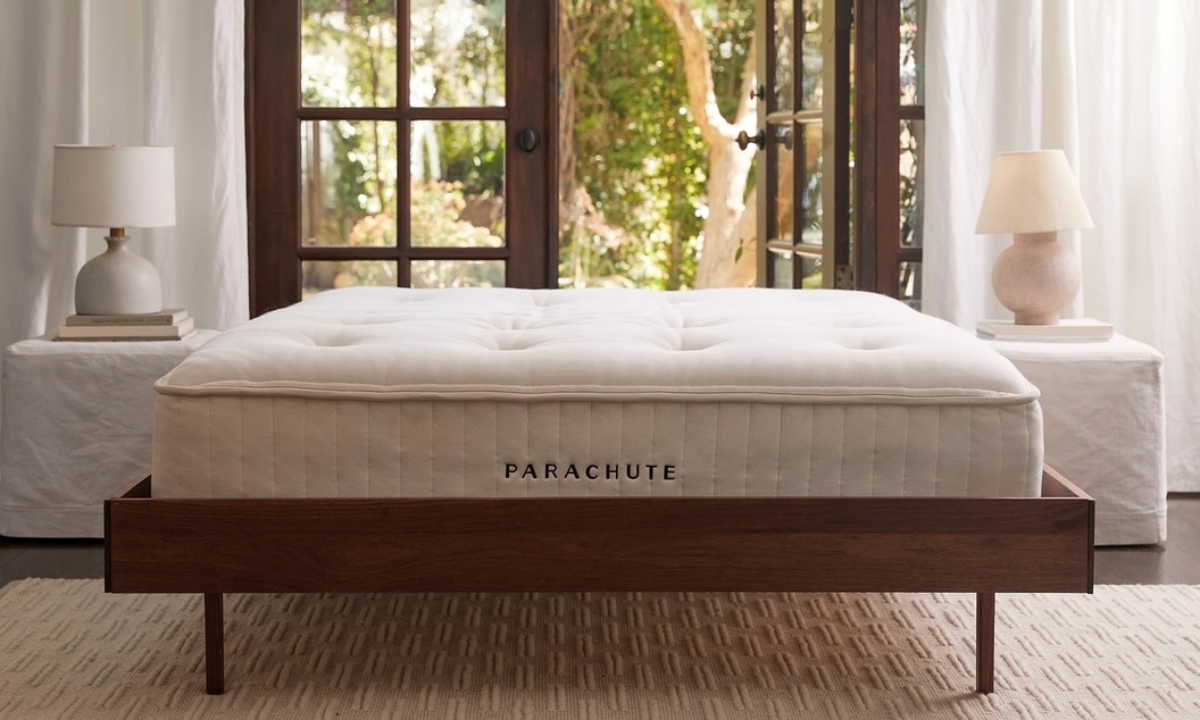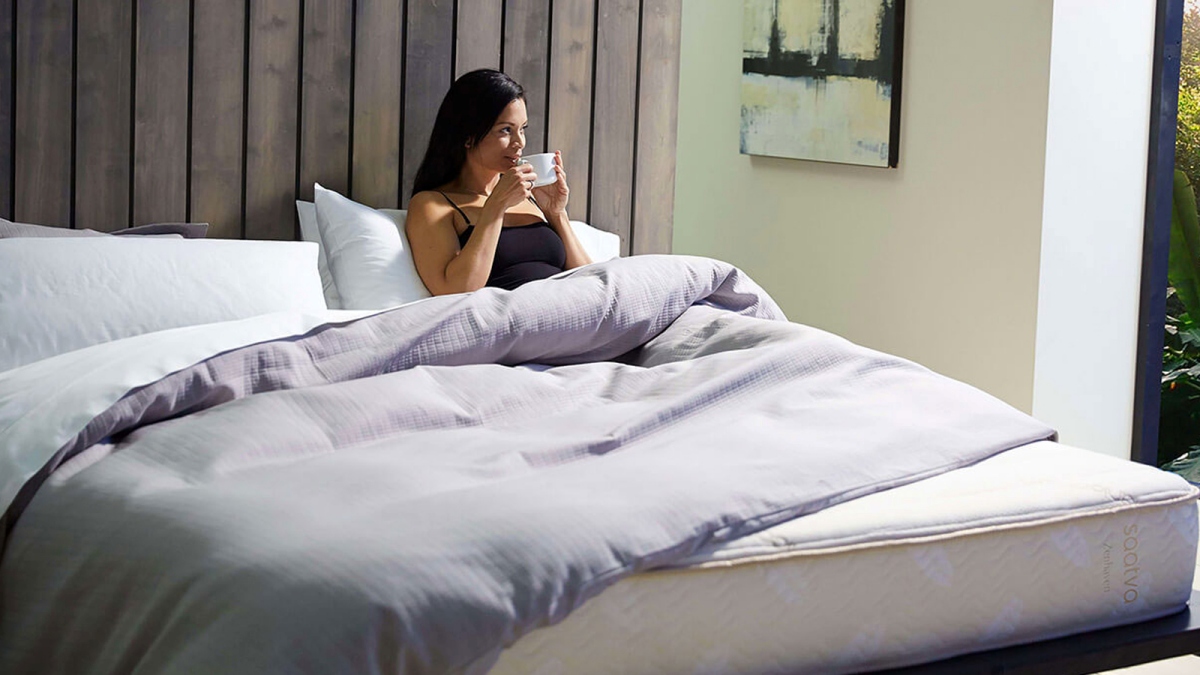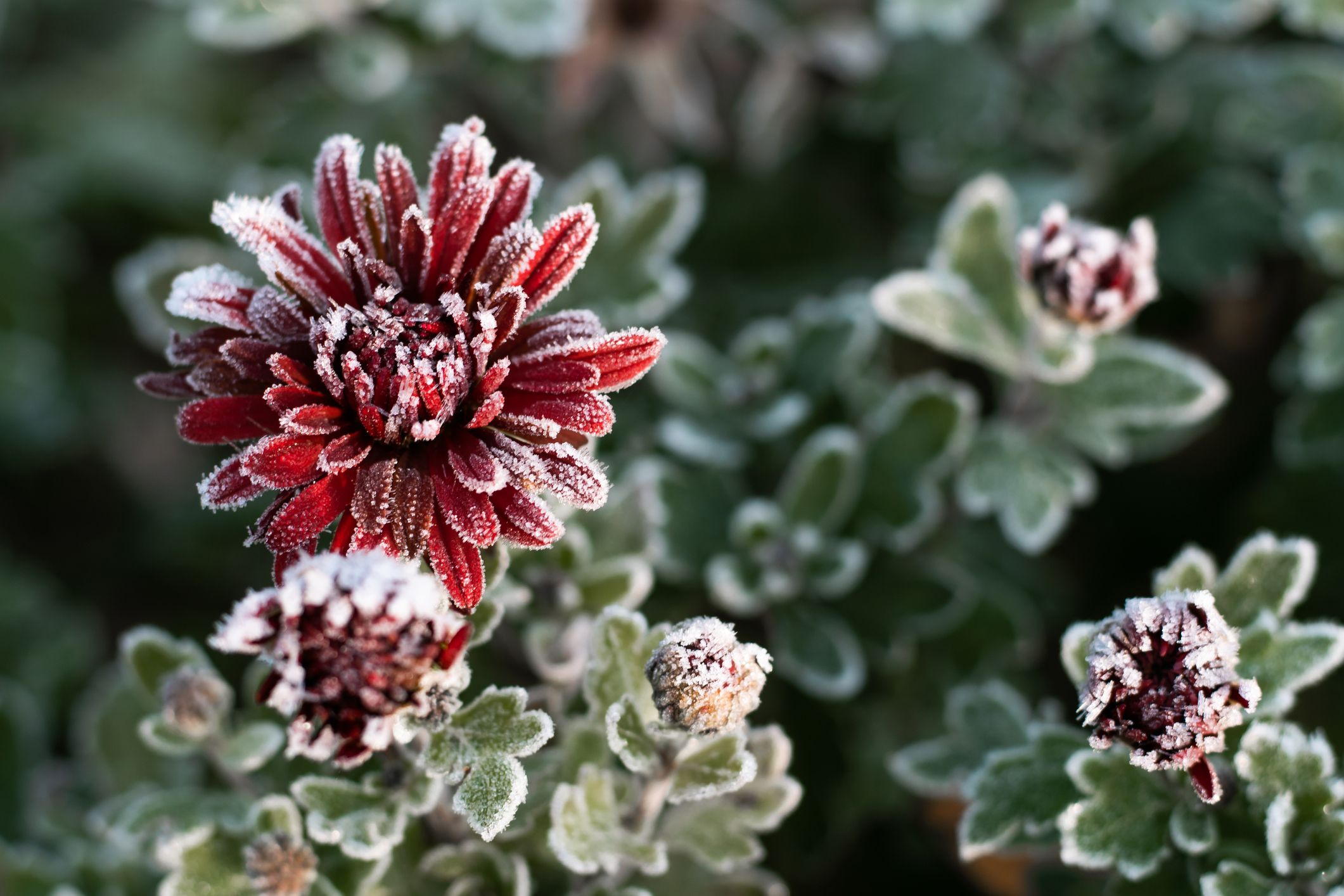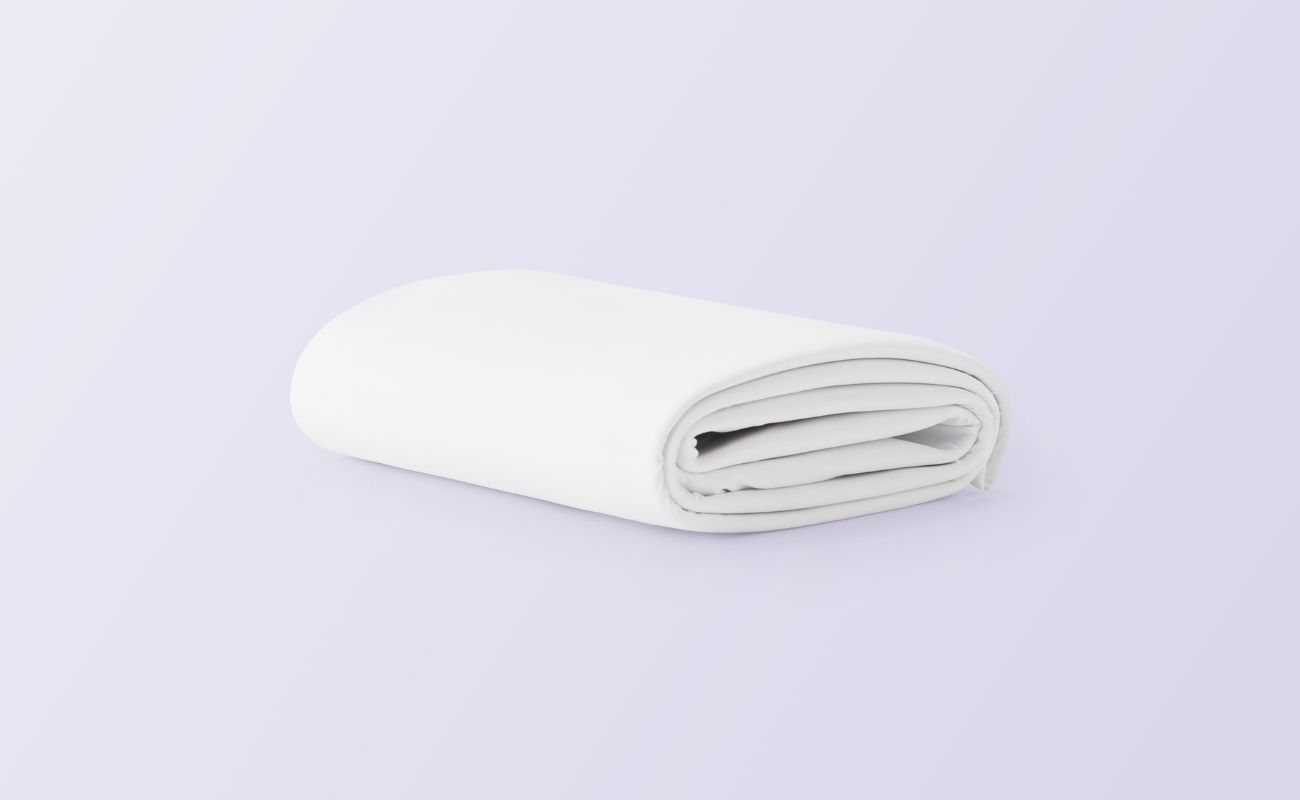Home>Furniture>Bedroom Furniture>What Does A Mattress Cover Do
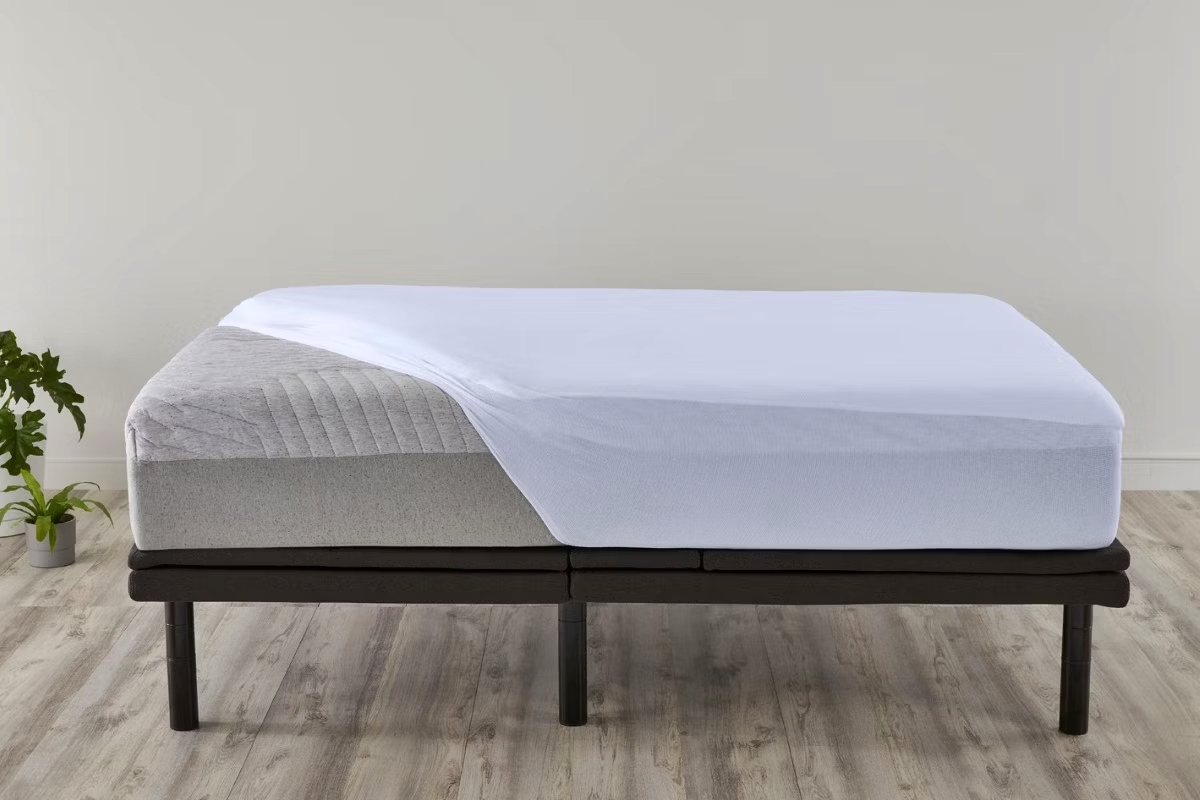

Bedroom Furniture
What Does A Mattress Cover Do
Modified: October 22, 2024
Discover the benefits of using a mattress cover for your bedroom furniture. Protect your investment and extend the lifespan of your mattress with this essential accessory.
(Many of the links in this article redirect to a specific reviewed product. Your purchase of these products through affiliate links helps to generate commission for Storables.com, at no extra cost. Learn more)
Introduction
When it comes to creating a cozy and comfortable bedroom, choosing the right mattress is crucial. However, many people overlook the importance of a mattress cover. A mattress cover, also known as a mattress protector, serves as a protective barrier between you and your mattress. It can play a significant role in prolonging the lifespan of your mattress while providing additional benefits for a restful night’s sleep.
In this article, we will explore the various functions of a mattress cover and why investing in one is a smart choice. From protecting your mattress against stains and spills to providing allergy relief and temperature regulation, a mattress cover offers more than meets the eye. So, let’s dive into the benefits of using a mattress cover and how it can enhance your bedroom experience.
Key Takeaways:
- Protect your mattress and enhance your sleep experience with a mattress cover. It guards against stains, allergens, and moisture, while also providing temperature regulation and easy maintenance.
- Investing in a mattress cover is a smart choice to prolong the lifespan of your mattress. It shields against wear and tear, prevents allergens, and offers easy cleaning, ensuring a comfortable and hygienic sleep environment.
Read more: What Does Purple Mattress Warranty Cover
Definition of a Mattress Cover
A mattress cover, also known as a mattress protector, is a removable and often waterproof covering that encases your mattress. It acts as a barrier, shielding your mattress from stains, spills, allergens, dust mites, and other contaminants. Mattress covers come in various materials, such as cotton, polyester, or a combination of both, and can have additional features like hypoallergenic properties and temperature regulation.
A good quality mattress cover typically fits snugly around the mattress, providing full coverage and ensuring that it stays in place. It usually has an elasticized skirt or straps to keep it firmly secured and prevent it from shifting or bunching up during the night. Some mattress covers are even designed to be quilted or padded for added comfort.
The primary purpose of a mattress cover is to protect your mattress from everyday wear and tear, as well as potential accidents or spills. However, it offers more benefits beyond just safeguarding your investment.
Protection from Stains and Spills
One of the main benefits of using a mattress cover is the protection it provides against stains and spills. Accidents happen, whether it’s a spilled drink, a pet accident, or a late-night snack mishap. Without a mattress cover, these spills can seep into the mattress, leading to unsightly and potentially permanent stains.
A mattress cover acts as a barrier between your mattress and any liquids, preventing them from penetrating the surface. The waterproof or water-resistant material repels spills, keeping your mattress clean and stain-free. This not only preserves the appearance of your mattress but also helps maintain its hygiene and overall lifespan.
Furthermore, a mattress cover is particularly beneficial for households with young children or pets. It’s no secret that accidents can be more frequent with little ones or furry friends around. Having a mattress cover ensures that any unexpected messes can be easily cleaned up without any lasting damage to your mattress.
With a mattress cover, you can have peace of mind knowing that your investment is well-protected from unexpected stains and spills, allowing you to enjoy a clean and hygienic sleeping environment.
Allergy and Dust Mite Protection
If you suffer from allergies or asthma, a mattress cover can be a game-changer. Mattresses are a breeding ground for allergens, such as dust mites, dead skin cells, and pet dander, which can trigger allergic reactions and worsen respiratory conditions.
A mattress cover with allergen barriers provides an extra layer of protection against these microscopic pests. The tightly woven fabric prevents dust mites and allergens from penetrating the mattress, effectively reducing exposure to potential triggers. This can significantly alleviate symptoms and promote better sleep for allergy sufferers.
In addition to dust mites, mattress covers also guard against other common allergens. They create a barrier that prevents the accumulation of pollen, mold spores, and bacteria, ensuring a healthier sleeping environment.
Regularly washing your mattress cover can further enhance its allergen-fighting capabilities. By following the manufacturer’s instructions, you can effectively remove any trapped allergens and maintain a fresh and clean sleeping surface.
Whether you have allergies, asthma, or simply want to create a cleaner and more hypoallergenic sleep environment, investing in a mattress cover with allergy and dust mite protection can greatly improve the quality of your sleep.
Waterproofing and Moisture Control
Another key benefit of using a mattress cover is its waterproofing and moisture control properties. A waterproof mattress cover offers a layer of protection against accidents, spills, and even perspiration that can seep into the mattress.
The waterproof barrier prevents any liquid from reaching the mattress, keeping it dry and free from moisture damage. This is especially important in households where young children, pets, or individuals with nighttime bladder control issues are present.
Moisture control is not only essential for protecting the mattress, but it also helps to maintain a healthy sleeping environment. Moisture build-up can create a breeding ground for mold, mildew, and bacteria, which can lead to unpleasant odors and allergen growth.
A mattress cover with moisture-wicking properties helps to regulate the temperature and humidity around your mattress. It allows moisture to evaporate more quickly, keeping the mattress dry and fresh. This not only enhances the longevity of your mattress but also contributes to a more comfortable sleep experience.
Additionally, mattress covers with moisture control features can help prevent the development of bed bugs. These pesky insects thrive in warm and humid environments and can infest your mattress if given the opportunity. A moisture-repellent mattress cover acts as a barrier against bed bugs, keeping your mattress protected.
By investing in a mattress cover with waterproofing and moisture control capabilities, you can safeguard your mattress from liquid damage, maintain a hygienic sleep environment, and extend the life of your mattress.
A mattress cover acts as a protective barrier, guarding against spills, stains, and allergens. It can also extend the lifespan of your mattress by preventing wear and tear. Be sure to choose a cover that is waterproof and hypoallergenic for maximum protection.
Read more: What Does A Mattress Pad Do
Temperature Regulation and Comfort
A mattress cover can contribute to a comfortable and temperature-regulated sleep environment. Some mattress covers are designed with materials that help regulate body temperature, allowing you to sleep cool or warm depending on your preferences.
For those who tend to sleep hot, a mattress cover with breathable fabrics, such as cotton or bamboo, can promote better airflow and dissipate excess heat. These materials wick away moisture and allow for better ventilation, keeping you cool and comfortable throughout the night.
On the other hand, if you tend to sleep cold, there are mattress covers available that provide additional insulation and heat retention. These covers often have a quilted or padded design, providing a cozy, warm surface to sleep on.
Moreover, a mattress cover can add an extra layer of cushioning and enhance the overall comfort of your mattress. If your mattress is too firm or lacks sufficient support, a mattress cover with added padding or a foam topper can provide the necessary comfort and pressure relief.
By choosing a mattress cover that aligns with your temperature preferences and comfort needs, you can create an optimal sleep environment that promotes restful sleep throughout the night.
Prolonging Mattress Lifespan
A mattress is a significant investment, and proper maintenance is essential to ensure its longevity. A mattress cover can play a vital role in prolonging the lifespan of your mattress by providing an extra layer of protection against wear and tear.
By shielding your mattress from spills, stains, dust, and allergens, a mattress cover helps to prevent damage that can occur over time. It acts as a barrier, preventing debris and contaminants from seeping into the mattress, which can lead to mold growth, odors, and deterioration of the materials.
In addition, a mattress cover can help prevent the formation of indentations and sagging in the mattress. The cover adds an extra layer of support and reduces the impact of your body weight, distributing pressure more evenly. This helps to minimize the stress on specific areas of the mattress, reducing the risk of sagging and extending its lifespan.
Furthermore, a mattress cover serves as a protective shield against bed bugs and other pests that can infest your mattress. Infestations can be costly to eradicate and can significantly impact the lifespan and condition of your mattress. With a mattress cover in place, you create an additional barrier that deters these pests from infiltrating your bedding.
By investing in a high-quality mattress cover and using it consistently, you can enhance the durability of your mattress, ensuring that it remains comfortable and supportive for years to come.
Easy Maintenance and Cleaning
Maintaining a clean and hygienic sleeping environment is essential for your health and the longevity of your mattress. Fortunately, a mattress cover can make maintenance and cleaning a breeze.
Most mattress covers are designed to be easily removable and machine washable. When it’s time to freshen up your bedding, simply remove the mattress cover and toss it into the washing machine according to the manufacturer’s instructions. Regularly washing your mattress cover helps to remove allergens, dust, sweat, and any other accumulated debris.
Unlike the mattress itself, which can be challenging to clean, a mattress cover is much more manageable. You can easily spot clean any spills or stains with mild soap and water or use a stain remover specifically designed for the fabric of your mattress cover. By addressing spills and stains promptly, you can prevent them from seeping through the cover and into the mattress.
Regularly cleaning your mattress cover not only helps to maintain its freshness but also extends its lifespan. By removing dirt and oils regularly, you can prevent premature deterioration of the materials and ensure that your mattress stays in excellent condition for as long as possible.
Additionally, using a mattress cover can reduce the need to deep clean your mattress. Since the cover acts as a protective barrier, it prevents debris and allergens from penetrating the mattress. This means you can avoid the hassle and expense of professional mattress cleaning or the arduous task of attempting to clean the mattress on your own.
Incorporating a mattress cover into your bedding routine makes maintenance and cleaning more convenient, allowing you to enjoy a fresh and hygienic sleep environment with minimal effort.
Conclusion
A mattress cover may seem like a small and insignificant addition to your bedroom, but its benefits are far from minimal. From protecting against stains and spills to providing allergy relief and temperature regulation, a mattress cover offers a range of advantages that contribute to a better sleeping experience.
By investing in a high-quality mattress cover, you can safeguard your mattress from potential damage, prolong its lifespan, and maintain a cleaner and healthier sleep environment. Whether you have children, pets, or suffer from allergies, a mattress cover acts as a barrier against accidents, allergens, and dust mites, providing peace of mind and promoting better sleep.
Furthermore, with features like waterproofing and moisture control, a mattress cover helps to regulate temperature, reducing heat buildup and promoting a comfortable sleep environment. It adds an extra layer of cushioning and support, enhancing the overall comfort of your mattress.
In addition, a mattress cover is easy to maintain and clean. With its removable and machine washable design, you can easily freshen up your bedding and prevent the need for deep cleaning your mattress. This not only saves time and effort but also ensures that your mattress stays in excellent condition for years to come.
So, when you invest in a new mattress or want to extend the life of your current one, don’t overlook the importance of a mattress cover. It is a small investment that offers significant benefits in terms of protection, comfort, and hygiene.
Take the initiative to choose a mattress cover that suits your needs and preferences, considering factors like waterproofing, allergen resistance, and temperature regulation. With the right mattress cover, you can sleep soundly, knowing that your mattress is well-protected and your sleep environment is optimized for comfort and cleanliness.
Frequently Asked Questions about What Does A Mattress Cover Do
Was this page helpful?
At Storables.com, we guarantee accurate and reliable information. Our content, validated by Expert Board Contributors, is crafted following stringent Editorial Policies. We're committed to providing you with well-researched, expert-backed insights for all your informational needs.
